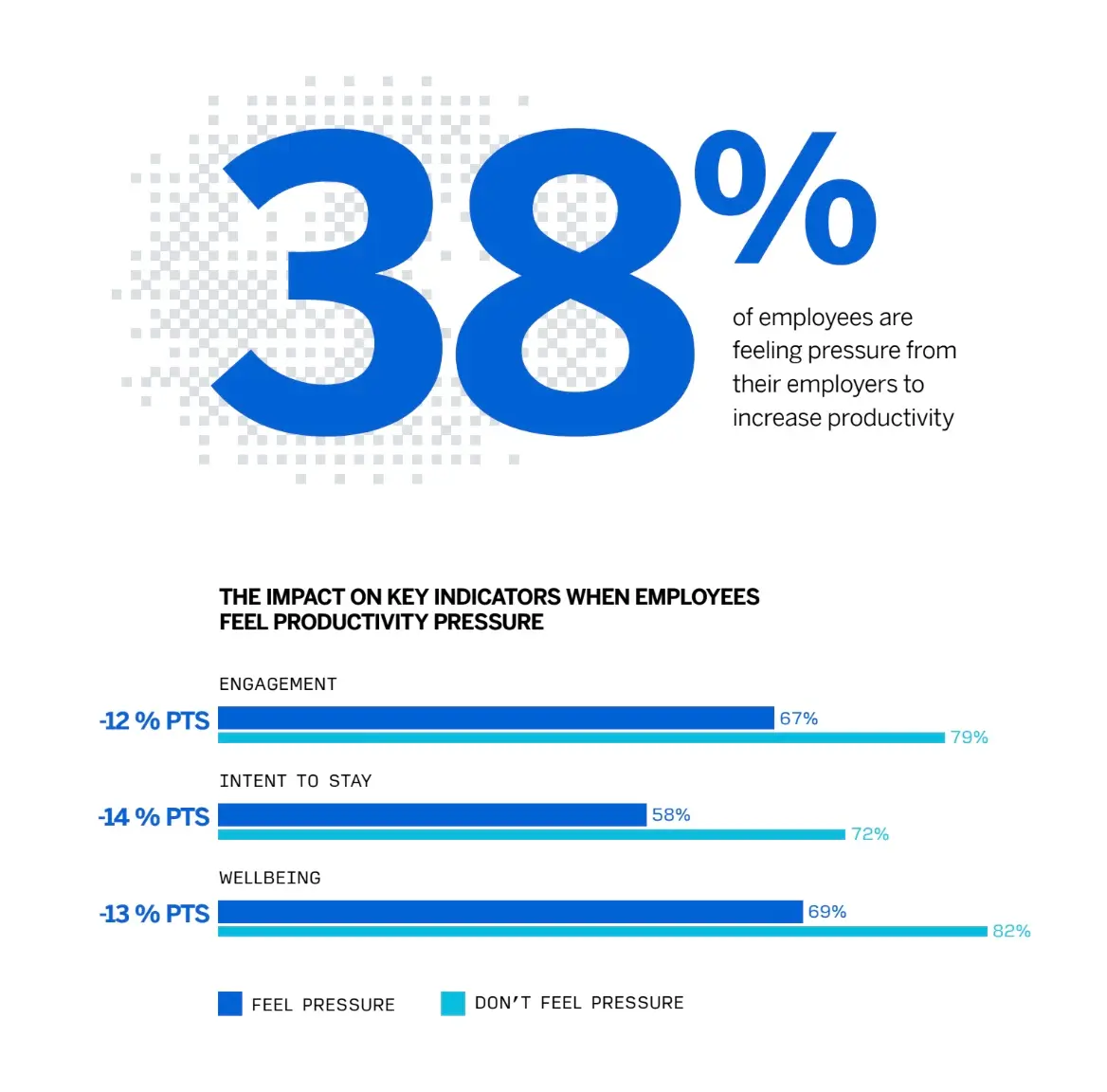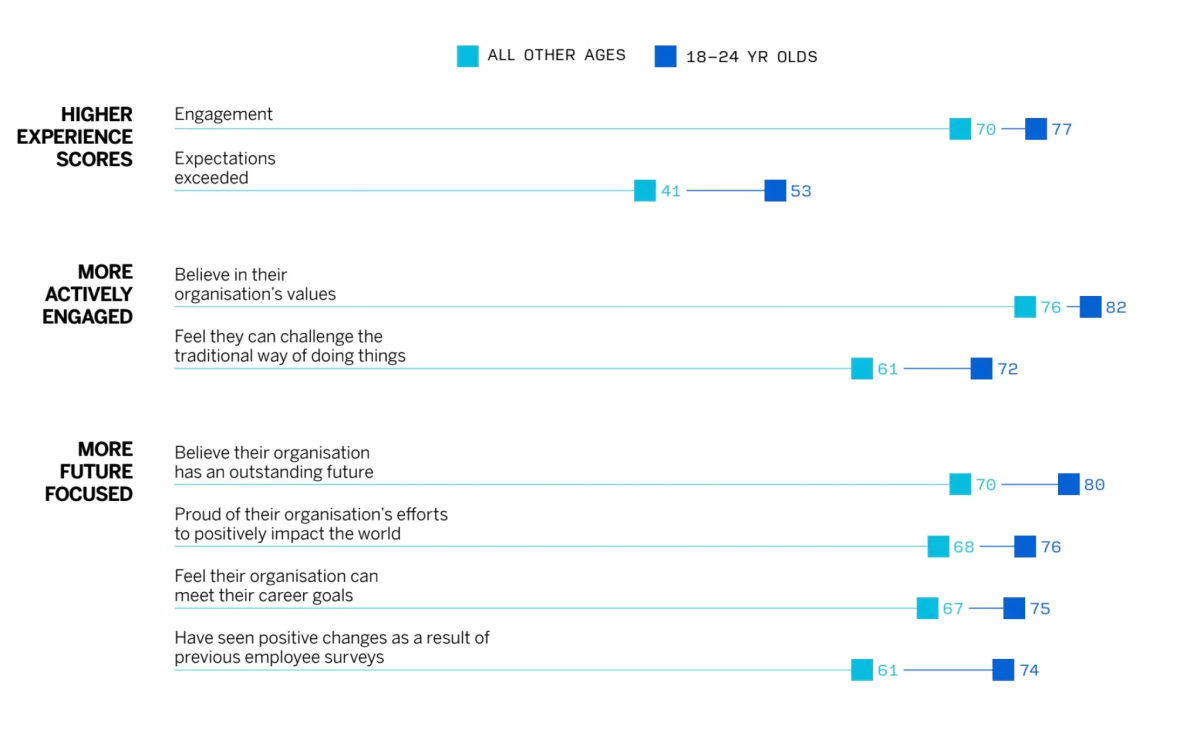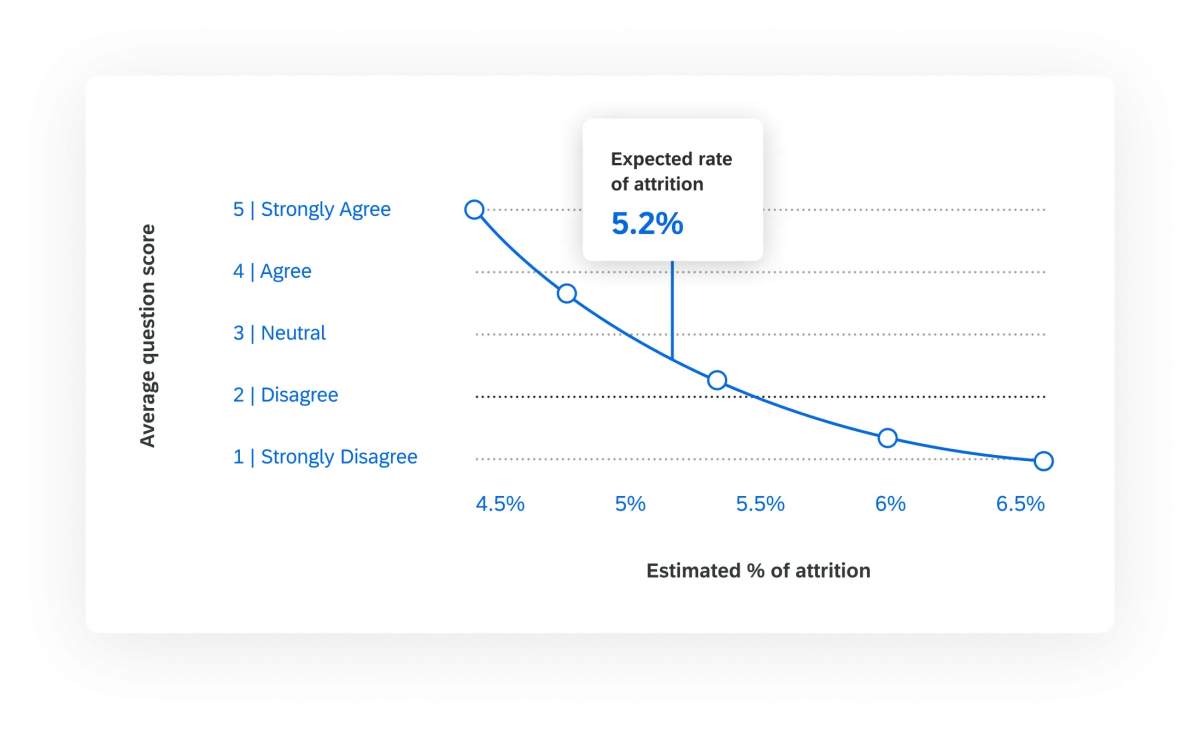Imagine, if you can, a trillion dollars: $1,000,000,000,000. That’s how much US businesses are losing every year just to voluntary employee turnover. Yet the true cost of turning over employees extends even further than all those zeros. It can: cause stress within teams affecting morale, wellbeing and productivity; change company culture; strain managers and leaders; weaken your brand’s relationship with customers and clients; and erode your business’s bottom line. All these are impossible to translate into hard currency, but believe us, they’re costly in other ways.
What is employee churn?
To understand employee churn, you need to understand employee turnover and employee attrition, as they are connected, but subtly different.
Here’s a handy table:
You’ll often hear employee churn referred to as ‘employee turnover’ and ‘employee attrition’, but they’re different: employee churn includes both turnover and attrition.
So what can you do about employee churn? We’re going to help you:
- Calculate employee churn rate
- Understand the true cost of losing and replacing employees
- Understand what causes employee churn
- Reduce employee churn
- Harness technology to take data-driven action and prevent churn
Free eBook: 2025 employee experience trends
How to calculate employee churn
There’s a simple formula for calculating your employee churn rate. Choose a set period of time, then divide the number of employees who leave by the number of employees remaining in that time, and multiply by 100.
Employee churn rate (%) = (number of leavers ÷ number of remaining employees) x 100
So, using this employee churn rate formula, if five employees leave, and 80 remain, your churn rate comes out at 6.25%.
The costs and impact of employee churn
There are three categories of costs due to employee churn that you need to be aware of:
1. Direct costs (hard cash)
2. Indirect costs and impacts (lost productivity, disruption, missed sales)
3. The Ripple Effect (more far-reaching consequences outside the organization)
Direct costs
An employee leaving doesn’t happen for free; you’ll have HR admin to prepare, exit interviews or surveys to conduct and process, and any PTO money owing or severance to be paid. And who will cover the exiting employee’s work? You’ll either need to hire temporary staff or give remaining team members extra work.
It’s also expensive to recruit a new employee: The Society for Human Resource Management (SHRM) reports that the average cost of replacing an employee has jumped from $4,129 in 2019 to $4,700 in 2023. Recruitment agency fees, advertising, screening of resumes, interviewer time, due diligence, and background checks all add up.
Then, when you’ve chosen your preferred new hires, they’ll need onboarding and training by supervisors and the team, and probably won’t be up to full productivity for 3-9 months.
Indirect costs and impacts
Productivity often takes a hit when an employee leaves. A pre-exit employee is probably not as engaged or productive as they could be, and their replacement will take time to get up to speed. A project may not flow as well without the departing employee’s knowledge and experience, and delays and errors may creep in.
Clients and customers may miss their familiar agents with whom they’ve built up a trusting relationship, and may take their business elsewhere.
When multiple people leave, it has a destabilizing effect on those who remain, creating uncertainty, lowering morale, even causing burnout and a decrease in psychological safety. Everyone is distracted from doing their normal job: from managers who are constantly hiring, firing and firefighting, to frontline employees who feel unsupported.
Numerous involuntary exits may have even further reaching implications, causing job insecurity among teams, destabilizing a previously cohesive company culture, and when word gets out, damaging the employer brand and reputation.
The Ripple Effect
Employee churn drops a stone into the organizational pond that ripples out externally. Talented colleagues leaving makes others question their own career development opportunities with the organization. Those talented colleagues have a wealth of industry and institutional knowledge, experience and customer insight that leaves with them – to a competitor. High employee churn can also affect brand reputation; word of poor employee experience soon spreads organically through media, social media, and people talking.
Why employees leave – some causes of employee churn
Employees leave for a variety of reasons. The most common ones are:
Low employee engagement
Low employee engagement is associated with a whole host of unwanted outcomes, such as absenteeism, lower productivity and turnover. And one of the drivers of low engagement is unnecessary pressure on employees. Our 2025 Global Employee Experience Trends Report found that 38% of employees are feeling pressure from their employers to increase productivity.

While some productivity pressure is unavoidable and can even be productive, it tends to have a negative impact on employee engagement, wellbeing, and intent to stay.
High turnover
Strange as it may sound, a workplace where people constantly leave may become self-perpetuating if the negative effects of employee turnover aren’t being dealt with. High employee turnover lowers morale among remaining employees, and new employees who are not yet fully onboarded may feel disappointed with their choice of employer if they see their colleagues leave around them.
This certainly needs addressing as our 2025 Global Employee Experience Trends Report also found that young employees (under 25) are the most engaged, positive, and optimistic of all employee groups:

The challenge is to keep these bright young employees, and this begins with excellent onboarding processes, because:
Poor onboarding
Our 2024 Employee Experience Trends Report found that employees with less than six months of tenure at an organization had the lowest intent to stay (three years or more): just 38% versus 65% overall – a 27-point difference and three points lower than 2023. In previous years, employees would remain at a higher level of engagement for at least a year in a new job.
Somewhere along the line, onboarding, particularly growth and development, and innovation, which new hires crave, had become less of a priority.
"Rather than bemoan under 25s’ low intent to stay, leaders should focus on ways to nurture their growth and creativity, stretch their skills, and ultimately capture the enthusiasm to set the workforce up for success for generations to come" Dr. Antonio Pangallo, Lead Researcher, Principal XM Scientist
Lack of training and development
Employees want to learn and progress through training towards a career goal, such as promotion, giving them a strong sense of purpose, and positive feelings about their work. When an organization doesn’t invest in training and development, employees feel undervalued, and will look for another employer who will.
Company culture
A negative or even toxic company culture is an obvious driver of high employee churn rate. Whether the atmosphere is judgmental or biased, there’s an unsustainable ‘workaholic’ culture, or there’s chaos and disorganization, an unhealthy company culture that may also affect employees’ physical and mental wellbeing. This can cause at best a lack of purpose, at worst overwork and even burnout, which are more factors that push your best people towards the exit door.
Poor managers
An employee’s performance depends on the quality of their manager. And the old saying, ‘people don’t quit jobs, they quit managers’ still rings true: 75% of exiting employees said they were leaving not because the job was bad, but because of a bad manager.
Lack of flexibility
According to our 2023 Employee Experience Trends Report, employees had been working at ‘surge levels’ for years, and are now expecting healthy work life boundaries. Employers who don’t embrace workplace flexibility are likely to lose employees to more flexible competitors.
Compensation and benefits package
Salary is unlikely to be the sole reason employees want to leave, but if poor pay and benefits make them feel undervalued and unrecognized, it could be an important factor influencing their desire to leave.
How to reduce employee churn
You will never be able to prevent employee churn, and neither should you. A company that doesn’t bring in new talent will simply stagnate. However, if employee churn costs are beginning to eat into your organization’s bottom line, it’s time to implement some employee retention strategies.
When it comes to keeping your valuable people, you need to understand three things:
1. What your current employees feel about their experience at your organization
2. The behaviors and sentiments that predict an employee’s exit
3. What exiting employees say when giving honest feedback about their tenure
Implement an exit listening solution
To do this, you need to implement an exit listening process. Organizations are increasingly using automated employee exit surveys to gather more honest feedback from their departing employees rather than exclusively face-to-face interviews, although these are still used. The process may include:
- Exit surveys
- Exit interviews
- Social exit surveys
This process is a great way to understand at scale why employees are leaving. You need to combine this survey data with HR analytics and predictive insights, and the employee feedback from other stages in the lifecycle, with operational data such as staff turnover figures to help you identify actions that will help reduce churn. We’ll cover how to automate this with technology, below.
For surveys, quite simply ask employees pertinent questions on what they feel about the main drivers of employee churn:
- Onboarding
- Workplace culture
- Career growth opportunities
- Rewards and recognition
- Flexible work arrangements
- Management
- Wellbeing
When reviewing the data from your employee listening solution, look at the trends and drivers of your leavers. You may find that drivers for these people differ from the workforce as a whole. These will help you target the right interventions to improve retention in groups you have identified.
And most importantly, act on the feedback you have received. As more employees trust the actions their companies take based on feedback, employee retention and employee engagement increase, and employee churn rate decreases.
Focus on employee wellbeing - holistically
The US Department of Health and Human Services suggests that:
- 84% of survey respondents said their workplace conditions had contributed to at least one mental health challenge
- 81% of workers reported that they will be looking for workplaces that support mental health in the future.
Organizations, managers, and employees all have roles to play in supporting physical and mental wellbeing and ultimately, creating a positive workplace culture, by:
- Building a cultural environment of acceptance around how, where, and when work gets done, building in breaks and time off, and considering wellbeing.
- Managers modeling behaviors that help employees prioritize work, but also encourage them to take (restorative) time off, thereby perpetuating a positive culture.
- Allowing employees to shape the culture by establishing their own work boundaries, communicating with their managers about workload, and taking ownership of a healthy work life balance.
Invest in career development opportunities
Ongoing employee career development is a key part of management. Include in your training and development programs for all employees, especially your new hires in their first year:
- Clear paths for career growth and advancement with full senior leadership approval of the employee development strategy
- Formal learning and development programs: internal if possible, or access to external opportunities to help employees gain new skills
- Defined career mobility programs that give flexibility for employees to experience different departments and functions
- Alignment of business goals with employee career goals
Recognize your employees
Employees need to know that their hard work is seen and recognized, and that they’re appreciated. Meaningful recognition boosts employee morale and drives employee engagement. Engaged employees are less likely to seek other job opportunities.
High performers in particular, who are putting in more hours and delivering greater value than others, thrive on recognition. In addition to competitive compensation and benefits, make sure that top talent is recognized for their outstanding contributions.
Harness experience management technology to reduce employee churn
When you use an employee attrition tool on an employee feedback platform such as Qualtrics XM you’ll be able to pinpoint the key factors that contribute to employee churn.
You’ll:
Understand the root causes of churn
Using insights from engagement scores, demographic data, and exit surveys, zone into specific employee populations or demographics to make action plans more targeted.
Anticipate churn
Even better, catch attrition before it happens, with employee segment analysis that flags up at-risk employees and groups so you can stage some interventions.
Forecast the business impact of churn
Some tools have a built-in attrition simulator so you can input different scenarios and see how your planned strategies will impact your retention rate.
The Qualtrics employee attrition solution helps you understand and reduce churn effectively. By providing a comprehensive platform for gathering and analyzing employee feedback, you will be able to identify the key factors contributing to attrition.

Our solution helps your HR team implement proactive strategies to drive employee engagement and enhance retention, so you can make informed decisions that create the best employee experience possible – and keep your great people.



